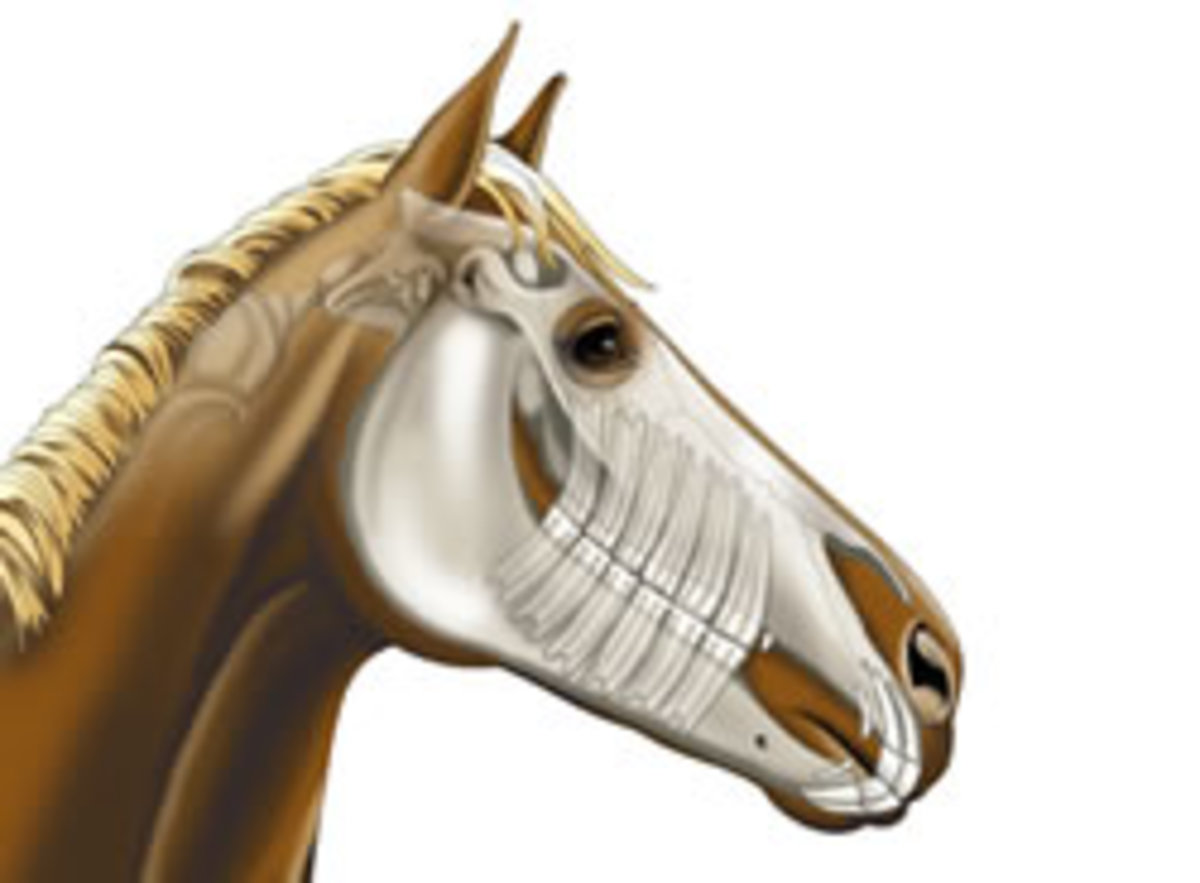Home > Horse Care > Common Equine Dental Problems
Common Equine Dental Problems
- February 4, 2025
- ⎯ Christine Barakat
When your veterinarian begins describing your horse’s oral anatomy, you may feel as if you need an interpreter. Sure, some terms such as “overbite” and “underbite” are easy enough to understand. But visualizing a “wave mouth” or a “step mouth” can be difficult.
Even if your veterinarian helps you peer into your horse’s mouth, it can be tricky to recognize bite or wear abnormalities. To help you become a better partner in your horse’s care, we’ve compiled definitions of the most common equine dental abnormalities. If you review them now, the next time your horse has a dental exam, you’ll know exactly what the veterinarian is talking about.
Click here to learn what behaviors can signal dental pain in a horse.
Malocclusions
Malocclusions that stem from jaw conformation are nearly always present at birth. But they are not necessarily inherited. Minor malformations may have no effect on a horse’s immediate ability to eat, but all misalignments eventually affect the wear pattern on other teeth, making regular dental care essential.
An overbite (parrot mouth, brachygnathism) is a congenital deformity in which the upper incisors overlap the lower incisors.
An underbite (monkey mouth, sow mouth, prognathism) is a deformity in which the lower incisors extend beyond the upper incisors.

Dorsal curvature (frown) occurs when the outer corner upper incisors grow longer than the opposing teeth below. In ventral curvature (smile), the outer corner lower incisors grow longer than the opposing teeth above. Both misalignments are usually caused by retained baby teeth or abnormal chewing.
A diagonal bite may result from a malocclusion or pain in the cheek teeth that causes a horse to grind feed primarily in one direction.
Abnormal wear patterns
The following dental problems and abnormal wear patterns require the attention of a veterinarian.
Hooks—sharp protrusions that develop on teeth when an overbite, underbite or other dental deformity causes an imperfect meeting of the top and bottom arcades. Most common on the upper first cheek tooth and lower last molar.
Ramps—typically premolars with a surface that slopes like a ski jump. Ramps can cut or scrape the tongue or cheek, especially when a horse wears a bitted.
Step mouth—a cheek teeth row with one molar that has grown unopposed so it juts above the rest of the arcade. A gap in the opposite molar lineup usually initiates the abnormality.
Wave mouth—a severely restricting abnormality that occurs when two or more teeth in an arcade are high, creating a series of ascending and declining grinding surfaces.
Shear mouth—a dental configuration in which the molars’ grinding surfaces are worn at a sharp 60- to 75-degree angle. Normally, the angle is 15 degrees.
Don’t miss out! With the free weekly EQUUS newsletter, you’ll get the latest horse health information delivered right to your in basket! If you’re not already receiving the EQUUS newsletter, click here to sign up. It’s *free*!





